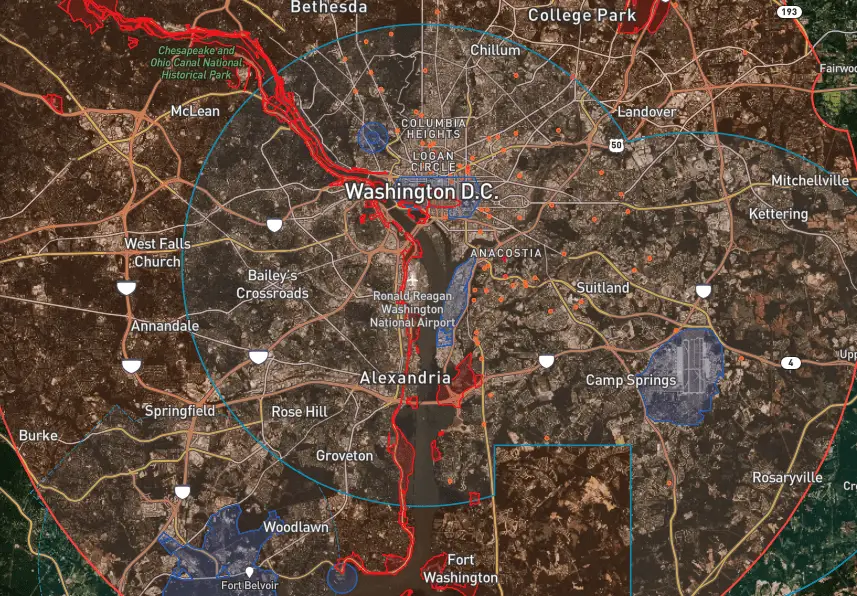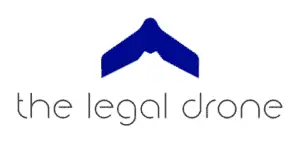The FAA, which governs the airspace in the United States, does not have any laws or regulations in place specifically stating that you cannot fly your drone inside a city. Importantly though, if you are looking to fly your drone in a city, there are several regulations (and possibly local laws) that may prohibit you from flying your drone in a city or in a certain part of a city.
There are a Number of General FAA Regulations that Apply to Flying a Drone in the City
In the United States, you can either fly your drone as a recreational drone pilot (for fun) or you can fly your drone as a commercial drone pilot under Part 107 (to make money). Despite the fact that there are different rules for each type of pilot, there are some drone regulations that will apply to both types of drone pilots when trying to fly a drone in the city.
- Register Your Drone (link to The Legal Drone article) – As a recreational drone pilot, you are basically registering yourself as a pilot, no matter how many drones you have. If you are a commercial drone pilot, you will be registering each drone that you own and fly. My article linked up above gives the detailed breakdown of each process but this is a necessity before you fly a drone at all in the United States.
The rules outlined below are general guidelines for all drone pilots. It is possible for each of these rules to be waived or that you are given authorization to fly in additional circumstances (check out our article on Getting Waivers and Authorizations under Part 107), but without a waiver or authorization, you should operate under the following rules:
- Know What Type of Airspace You are Flying In – All airspace in the United States is either controlled (Classes A, B, C, D, and E) and uncontrolled (Class G). You are only able to fly in Class G airspace without further approval. If you will be flying in classes A, B, C, D or E, then you will need further permission. The FAA also puts temporary flight restrictions in place for security reasons or when there are special events going on that will have a lot of people. Download an app like Airmap and use it to see what type of airspace exists where you want to fly and what flight restrictions are in place before you fly. Check out our article on LAANC apps like Airmap for more information on how to get permission to fly in controlled airspace.
- Stay Away from Manned Aircraft – This one is a no-brainer but all drone pilots should stay away from manned aircraft. This includes helicopters and other low flying aircraft.
- Fly Below 400 Feet – When your drone takes off, it will likely provide a reading of its height above the ground. Your drone probably has a setting that doesn’t allow it to fly above a pre-set height. Make sure you set this limit to 400 feet or below.
- Keep Your Drone in Line of Sight – You should be able to see your drone with your naked eye at all times. This line of sight must be without the use of a zoomed in camera or binoculars. If you can’t see your drone, you don’t know whether you are breaking any of the other rules or whether you are flying safely.
- Operate Your Drone During the Day or Civil Twilight – You should only fly your drone during the day. Additionally, you can fly your drone in civil twilight if you have the proper lights on your drones (link to Amazon).
- Do Not Fly Over People – This is where you may begin to have some issues flying in a city because naturally, cities have a lot of people. That said, you are not allowed to fly over people. So, while the rules do allow you to fly in a city generally, either as a recreational or commercial drone pilot, this rule could be one that causes you to re-think exactly how you are flying in the city. As an example, I’ve been hired before to fly in a downtown location where there are large buildings and naturally, a lot of people. One thing that I’ve done is to find a parking garage or building with rooftop access so that you can fly your drone over those areas. Sometimes you just have to be creative in your solutions to make a drone flight happen.
Some Cities are More Off Limits than Others

This is the airspace in and surrounding Washington D.C. Not only is it covered by Class B airspace, it also has a Special Flight Rules Area with two rings of airspace with additional restrictions. Special FAA authorization is required if you want to fly within the 15-mile radius ring, while you are able to fly between 15-30 miles from Washington D.C. if you follow these rules:
- Aircraft must weigh less than 55 lbs. (including any attachments such as a camera)
- Aircraft must be registered and marked (if it is not operated exclusively under the Special Rule for Model Aircraft, pending NOTAM change)
- Fly below 400 ft
- Fly within visual line-of-sight
- Fly in clear weather conditions
- Never fly near other aircraft
Similarly, in New York City, while you can technically get FAA approval for flights in certain parts of the five boroughs, New York City’s own government website reads “Call 911 to report a drone in use in New York City. Drones are more formally known as unmanned aerial vehicles (UAV). It is illegal to fly them in New York City.”
The larger point is just that no matter where you will be flying your drone, you need to make sure that there are no state or local rules in place. While the FAA governs the airspace in the United States, cities and states are also taking the stand that a drone pilot operating a drone in their jurisdiction means they can regulate that activity.
If you’ve checked for state or local rules and there are none, you can easily just defer to the rules laid out by the agency that governs the airspace in your country. In the United States, that is the FAA.
FAA Regulations on Drone Flights Can be Authorized or Waived
Finally, no matter if you’re flying a city that has other drone rules for you to follow or not, the FAA provides a way for any FAA rules to be waived, or to authorize flights in specific areas. This does not mean that the FAA can waive the state or local rules. Simply that it can allow exceptions to its own rules in certain situations.
Use of apps like Airmap or Kittyhawk (Check out our article on the Best LAANC Apps) allow recreational and commercial drone pilots to get airspace authorizations to fly in controlled airspace. This is very easy to do, and I highly recommend that you use a LAANC app every time you fly your drone. This will not only allow you to get airspace authorizations, but will also allow you to be more aware of other potential issues. This could be anything from a temporary flight restriction to a helipad or stadium nearby. It is never a bad thing to be more aware of your surroundings and using a LAANC app for all of your drones flights will encourage this.
But getting a waiver (typically those requests not related to airspace) is relegated to Part 107 pilots. At this time, there is no way for a recreational drone pilot to get a waiver for many of the other requirements. If you want to fly your drone in a number of more difficult situations, you should look into getting your Part 107 license and then requesting a waiver from the FAA. We’ve got a whole guide to getting airspace authorizations and waivers.

